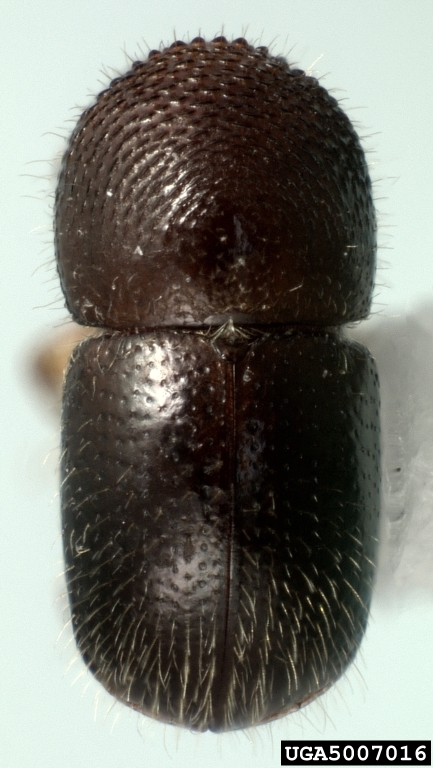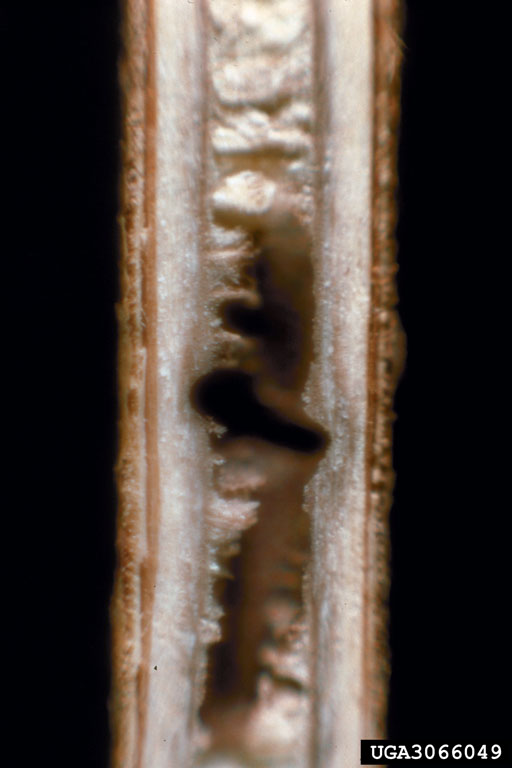Exotic Pest: Black Twig Borer
WHAT IS IT?
Though not currently found in Australia, the black twig borer (Xylosandrus compactus) infestation becomes apparent when die-back of twigs and branches occurs.
A severe infestation can kill host plants, including large trees.

An adult black twig borer. Photo courtesy Michael C. Thomas, Florida Department of Agriculture and Consumer Services, Bugwood.org | CC BY-SA 3.0.

Black twig borers in their gallery, which they inoculate with symbiotic fungi that serve as food for adults and larvae. Photo: Forrest L. Oliveria, USDA Forest Service, Bugwood.org | CC BY-SA 3.0.
WHAT TO LOOK FOR?
The female black twig borer is a very small (1.6mm) long, shiny, black, cylindrical beetle. Males are half as long as females and incapable of flight. Eggs are extremely small, oval, white and translucent. Black twig borer grubs are white and legless. The body of young grubs is pointed at the rear. Older grubs have brownish heads and round tails.
WHAT DAMAGE DOES IT CAUSE?
Female black twig borers tunnel into woody twigs leaving pin-sized entry holes, usually on the underside of twigs. Once inside they excavate galleries and lay eggs. This excavation, along with the introduction of pathogens, is the major cause of damage to the host. Female beetles introduce a fungus on which the grubs feed. Infestation by one to three females is sufficient to kill the twig or branch.
HOW CAN I PROTECT MY ORCHARD FROM THE BLACK TWIG BORER?
Check your orchard frequently for the presence of new pests and unusual symptoms. Make sure you are familiar with common mango pests so you can tell if you see something different.
If you see anything unusual, call the Exotic Plant Pest Hotline on 1800 084 881.
Find out more
|
VISIT |